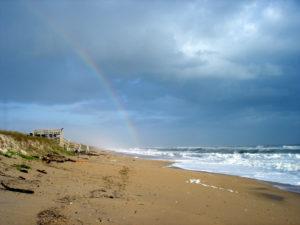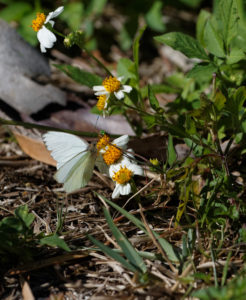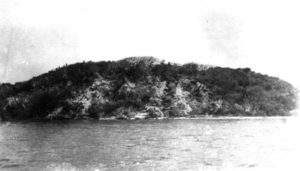A long barrier island on Florida’s Atlantic Coast, just west of Orlando and south of Daytona, is notable for two reasons. One is the presence of NASA’s Kennedy Space Center rocket launching site. The other is Canaveral National Seashore, signed into existence on January 3, 1975, by President Gerald Ford.
Even without being adjacent to Kennedy Space Center, Canaveral deserves recognition as an area of outstanding ecological value. The seashore includes 58,000 acres of barrier island, including a 24-mile stretch of undeveloped beach—the longest on Florida’s East Coast. But its proximity to the space center gives it special cache. Formerly part of a missile-testing facility, it was declared a national seashore to provide a natural buffer to the adjacent NASA rocket-launching sites. That rationale has meant no development in the park, aside from a few parking lots dotted along the beach. There are virtually no facilities, for recreational users or anyone else. Day use only is allowed, and visitors must be gone by sundown.

Consequently, the area is a haven for wildlife, with only natural light—and dark—and sounds of wind and surf.

The park includes habitat for 15 threatened or endangered species, more than all but one other National Park Service property. Three species of sea turtles nest there, building up to 7,000 nests every year. As many as 250 species of birds are present, either resident or using the habitat for refuge on annual migrations. It may be the ultimate paradox—a site created to preserve untouched nature is neighbor to a site where humankind’s most advanced technologies are launched into outer space!
The area seems untouched now, but it has been inhabited by humans for a long time. Archeological sites within the seashore demonstrate that Native Americans of the Timucua and Ais peoples were well established before Spanish explorers, including Ponce de Leon, landed in the vicinity around 1500. The Indians built Turtle Mound, a hill of oyster shells that long provided a navigation landmark and is still more than 30 feet high. Spansh and French explorers frequented the area for centuries, and the role of the lagoon behind the beach was significant for water transportation through the late 1800s.

Visitation is high. More than 1.6 million people enjoyed the park in 2016, and visitation has been over 1 million annually since soon after the park’s opening in 1975. The park is open very day of the year, but the southern beach area is so close to one NASA launching pad that it is closed when launches are scheduled.
References;
Duckett, Maryellen Kennedy. Florida’a Pristine Parks: Canaveral National Seashore. National Geographic. Available at: https://www.nationalgeographic.com/travel/florida-pristine-parks/canaveral-national-seashore/. Accessed January 3, 2018.
National Park Service. 2007. First Annual Centennial Strategy for Canaveral National Seashore. Available at: http://npshistory.com/publications/future-americas-parks-2007/centennial-strategies/cana.pdf, Accessed January 3, 2018.
National Park Service. Canaveral National Seashore, Florida. Available at: https://www.nps.gov/cana/learn/nature/index.htm. Accessed January 3, 2018.
Orlando Sentinel. 2013. Florida Beach Guide: Canaveral National Seashore. Available at: http://www.orlandosentinel.com/travel/beach/orl-canaveralbeach-story-story.html. Accessed January 3, 2018.
